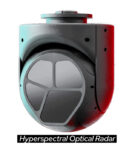The U.S. Navy has publicly revealed for the first time a P-8A Poseidon aircraft flying while carrying an AGM-158C Long Range Anti-Ship Missile (LRASM), marking a significant milestone in expanding the maritime patrol aircraft’s role from ISR and ASW to long-range anti-surface warfare (ASuW). The development underscores ongoing efforts to adapt legacy platforms for high-end conflict scenarios in contested maritime environments.
First Look at P-8A with LRASM Underscores Strategic Shift
On September 27, 2025, Naval News published exclusive imagery showing a U.S. Navy P-8A Poseidon testbed aircraft equipped with an AGM-158C LRASM mounted on its underwing pylon during flight operations. The image was reportedly taken at NAS Patuxent River, Maryland—a key site for Naval Air Systems Command (NAVAIR) testing and integration programs.
This visual confirmation follows earlier reports and budget documents indicating that the U.S. Navy was pursuing integration of LRASM on the P-8A as part of its broader effort to enhance survivability and lethality against near-peer adversaries such as China’s PLAN surface fleet.
The integration is being led by Boeing (airframe OEM) and Lockheed Martin (LRASM developer), working under NAVAIR oversight. While no formal IOC date has been announced, the in-flight carriage test suggests that aerodynamic fit checks and safe separation trials are progressing toward full weapons release trials within FY2026.
From Sub-Hunter to Strike Platform: Evolution of the P-8A
The Boeing P-8A Poseidon is derived from the commercial 737-800ERX airframe and entered service with the U.S. Navy in 2013 as a replacement for the aging P-3C Orion fleet. Originally optimized for anti-submarine warfare (ASW), ISR, and maritime patrol missions, it carries sonobuoys, torpedoes (Mk 54), Harpoon Block I anti-ship missiles, and advanced radar/EO sensors.
However, as threats evolve—particularly in Indo-Pacific A2/AD environments—the need for longer-range stand-off strike capability has grown urgent. The Harpoon missile’s limited range (~125 km) is increasingly seen as insufficient against modern layered defenses.
Integrating LRASM onto the P-8A would allow it to engage high-value surface targets from over 370 km away while remaining outside most naval SAM engagement zones—transforming it into a credible long-range maritime strike asset capable of shaping sea control operations jointly with carrier air wings or submarines.
LRASM Capabilities and Integration Challenges
The AGM-158C LRASM is based on Lockheed Martin’s JASSM airframe but incorporates advanced sensors and autonomy tailored for naval targets:
- Range: Estimated >370 km
- Warhead: 450 kg penetrator/blast-fragmentation
- Guidance: GPS/INS + passive RF + imaging IR seeker + AI-based target recognition
- Survivability: Low-observable design; sea-skimming flight profile; autonomous re-targeting
Integrating such a weapon onto the P-8 presents several challenges:
- Aerodynamic compatibility: Ensuring safe carriage underwing without adverse effects on flight performance or structural integrity.
- MMS software updates: Modifying mission management systems to support targeting data input/output for LRASM employment.
- SAR/EO coordination: Leveraging onboard radar (AN/APY‑10) or external C4ISR assets to cue long-range targets beyond radar horizon.
The recent test flight suggests that at least initial carriage trials have cleared these hurdles sufficiently to proceed toward live-fire validation phases.
Tactical Implications in Indo-Pacific Scenarios
The addition of LRASM fundamentally alters how the U.S. Navy might employ its fleet of over 120 operational P‑8As across multiple theaters—but especially in contested regions like the South China Sea or Philippine Sea where Chinese surface action groups operate under dense AAW coverage.
P‑8As operating from Guam or Australia could now contribute directly to offensive kill chains using organic sensors or networked C4ISR inputs via Cooperative Engagement Capability (CEC) or Link‑16/MADL relays. This reduces reliance solely on carrier-based aviation or submarines for anti-surface fires—adding redundancy and complicating adversary targeting calculus.
This also supports Distributed Maritime Operations (DMO) doctrine by enabling dispersed platforms like MPA aircraft to deliver precision effects independently or as part of kill webs involving MQ‑4C Triton UAVs, E‑2D Hawkeyes, DDGs with SM‑6s/Tomahawks, etc.
Status of Program Funding and Future Milestones
The FY2024 National Defense Authorization Act included funding lines supporting continued development of stand-off weapons integration on non-traditional platforms—including $49 million earmarked for “P‑8 Advanced Weapons Integration.” This includes not only LRASM but potentially future payloads such as MALD decoys or hypersonic prototypes post-FY2027.
Boeing confirmed earlier this year that ground vibration testing had been completed successfully at St. Louis facilities using instrumented wing pylons designed specifically for heavy cruise missiles like JASSM/LRASM class munitions. Live-fire tests are expected by late FY2026 at NAS Point Mugu or Pacific ranges depending on range availability and telemetry support infrastructure readiness.
NATO Interoperability and Allied Interest
If successfully fielded by U.S. forces, allied operators of the P‑8 platform—including Australia, UK, Norway, India—may seek similar upgrades via Foreign Military Sales (FMS). Australia already fields both P‑8As and F/A‑18Fs capable of launching JASSM‑ER variants; integrating LRASM would be a logical extension given its strategic interest in deterring PLAN activity near key sea lanes through Darwin or Perth basing hubs.
NATO interoperability would be enhanced through shared targeting protocols and common munitions stockpile logistics—particularly relevant if European navies begin fielding complementary standoff weapons like MBDA’s Perseus concept or Kongsberg’s NSM derivatives aboard frigates/submarines but lack airborne delivery options outside fast jets.
Conclusion: A Quiet Revolution in Maritime Airpower?
The sight of a sub-hunter turned strike platform carrying one of America’s most sophisticated anti-surface missiles signals more than just technical progress—it reflects doctrinal adaptation to peer competition realities where flexibility across domains is paramount. As testing continues into FY2026–27, successful deployment could significantly expand America’s distributed maritime fires architecture—and inspire similar adaptations among allies facing similar threats across Eurasian littorals.









